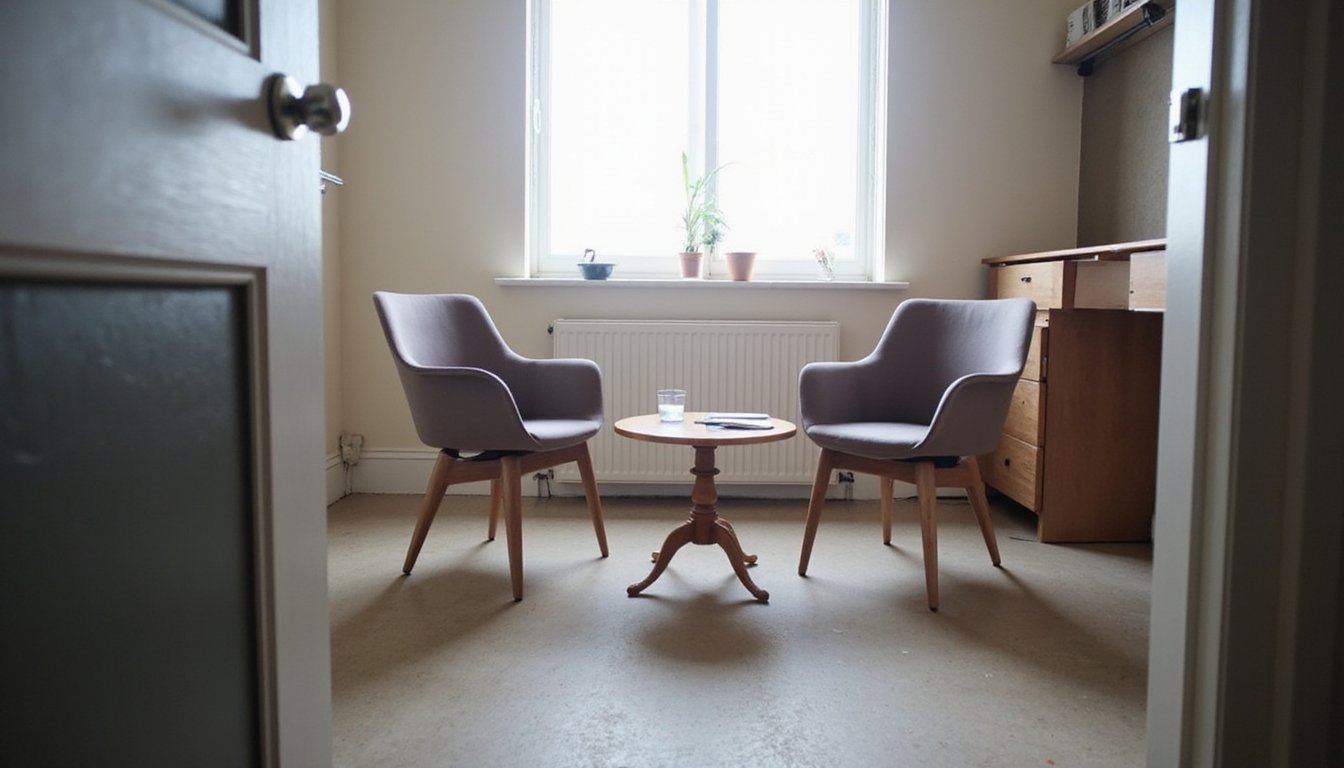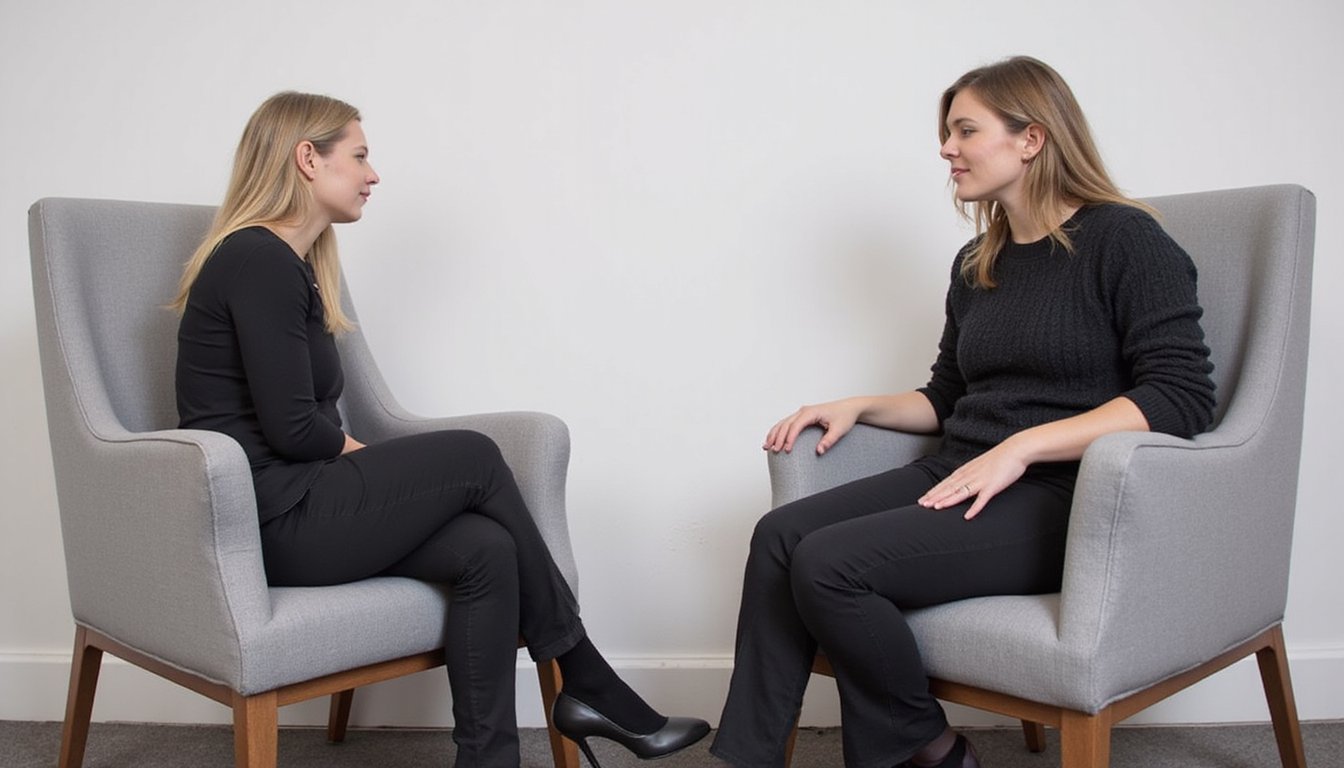Collaborative therapy will improve your mental health outcomes through its partnership-focused approach, with research showing a 67.6% response rate for depression and significant anxiety reduction. You’ll benefit from shared decision-making, personalized care strategies, and higher treatment adherence rates. The non-expert, dialogical process empowers you as an active participant, while systematic outcome tracking demonstrates consistent success across diverse populations. Exploring this therapeutic model reveals even more compelling evidence for its effectiveness.
The Core Philosophy Behind Collaborative Therapy

Five fundamental principles shape the core philosophy of Collaborative Therapy, establishing it as a distinct therapeutic approach. The shared experience framework emphasizes mutual respect between therapist and client, positioning both as equal contributors while reducing traditional power dynamics. You’ll find therapists adopt a non-expert stance, acknowledging clients as authorities of their own lives through open-ended questioning and curiosity-driven dialogue.
The client empowerment focus manifests through a dialogical process that values reflection over prescription, creating space for multiple perspectives and cultural backgrounds. This approach recognizes diverse realities while building on your existing strengths and resources. Rather than focusing on pathology, the therapy highlights resilience, previous successes, and available support systems, transforming challenges into opportunities for personal growth through collaborative exploration.
Building Trust Through Equal Partnership
Building an effective therapeutic alliance hinges on establishing trust through equal partnership between therapist and client. Research shows that when you engage in shared decision-making and goal alignment with your therapist, you’re more likely to experience improved emotional regulation and treatment outcomes. Studies by Cooper & McLeod (2011) demonstrate that relational congruence develops through mutual respect and recognition of your expertise in your own experiences.
Your active participation in treatment planning directly correlates with higher engagement rates and sustained progress. When therapists create space for your feedback and honor your autonomy, trust deepens and anxiety decreases. Evidence indicates that collaborative partnerships featuring regular check-ins, transparent communication, and cultural sensitivity lead to better treatment adherence and reduced dropout rates, particularly among diverse populations.
Evidence-Based Benefits for Mental Health

Research shows you’ll experience markedly better symptom reduction through collaborative therapy, with 75% of patients reaching diagnosis and starting treatment within 6 months compared to less than 25% in traditional care. You’re more likely to stay engaged in treatment when participating in collaborative care approaches, as evidenced by higher adherence rates and improved follow-through with treatment plans. The therapeutic alliance strengthens through collaborative practices, supported by data showing increased patient satisfaction and amplified outcomes across diverse psychiatric conditions in over 80 randomized controlled trials. Studies demonstrate that collaborative care therapy delivers treatment in a down the hall manner, allowing patients to work with familiar providers they already trust. This approach aligns with modern psychiatric treatment by emphasizing patient characteristics integration while developing personalized care strategies. The model employs a systematic approach where providers actively monitor patient progress through shared care registries to ensure consistent tracking of outcomes and prevent patients from falling through the cracks.
Symptom Reduction Success Rates
Compelling evidence demonstrates that collaborative therapy yields superior symptom reduction rates compared to conventional treatment approaches. You’ll find that patients in collaborative care achieve a 67.6% depression response rate versus 38.6% in standard care, with full remission rates reaching 43% compared to typical rates of 27% in specialty care. Family involvement is crucial for enhancing treatment effectiveness and patient outcomes. The groundbreaking IMPACT study showed a 50% reduction in depressive symptoms compared to only 19% with usual care.
The data shows you can expect significant improved functional outcomes through collaborative methods, with depression scores dropping by 9 points compared to just 5 points in traditional psychiatric care. For anxiety symptoms, patients experience a 5.4-point reduction on standardized scales versus 2.8 points in specialty care. Studies confirm that team-based care produces particularly strong results for Hispanic and non-White patients seeking trauma treatment. These benefits translate to meaningful quality of life bolstering, with sustained improvements documented across 4-, 6-, and 12-month periods. Manual-based psychotherapy and regular symptom monitoring prove particularly effective in driving these superior results.
Treatment Retention Impact Analysis
While symptom reduction metrics demonstrate the effectiveness of collaborative therapy, patient retention rates offer comparably striking evidence of its value. You’ll find that collaborative approaches noticeably reduce the 20-57% premature dropout rate through strategic alliance formation facilitators, including early trust-building and shared goal-setting. Research indicates that systematic tracking of patient outcomes is rarely implemented in routine care settings. Studies show that longer treatment durations lead to greater improvement in mental health symptoms.
A practical barriers analysis reveals that when therapists actively engage in collaborative problem-solving around scheduling and financial concerns, you’re more likely to maintain consistent treatment participation. Studies show that therapist competence significantly enhances treatment retention outcomes. The data shows a 36% increase in session attendance with competent collaborative practitioners, and therapeutic alliance improvements correlate with a 14% retention augmentation per unit. By implementing collaborative retention strategies and removing non-collaborative practitioners, response rates improve from 50% to 66%, demonstrating that partnership-focused approaches substantially amplify treatment completion and long-term engagement.
Therapeutic Alliance Benefits
Through extensive meta-analyses and clinical observations, therapeutic alliance emerges as a primary predictor of mental health outcomes across diverse disorders and treatment modalities. When you engage in shared decision making with your therapist, you’ll experience amplified treatment outcomes through a patient centered care approach that consistently demonstrates measurable benefits. Research dating back to Freud in 1912 first recognized the critical importance of the therapeutic relationship. While the statistical impact may seem modest, studies reveal that modest alliance effects account for approximately 7% of treatment outcome variance. Symptom improvement consistently shows a bidirectional relationship with therapeutic alliance quality in Major Depressive Disorder treatment.
- You’ll achieve greater symptom reduction and functional improvements when there’s a strong therapeutic bond, regardless of whether therapy occurs in-person or online
- Your treatment adherence and engagement increase considerably when you establish trust and rapport with your therapist
- You’re more likely to maintain long-term stability and prevent relapse through consistent alliance quality
- Your satisfaction with care improves as alliance-driven communication helps align treatment goals with your personal needs and values
Breaking Down Traditional Therapeutic Hierarchies

Traditional therapeutic models that position the therapist as the sole expert are giving way to more collaborative approaches that fundamentally reshape the client-therapist dynamic. These ongoing paradigm shifts emphasize the client’s expertise in their own experiences, creating dynamic power dynamics that elevate therapeutic outcomes. The therapist and client engage in participatory sense-making through metaphors and dialogue that deepen their shared understanding. Studies show that establishing a strong alliance between therapist and patient remains critical for positive outcomes across all treatment approaches.
You’ll find that modern therapeutic relationships now focus on co-creating direction and meaning, rather than following predetermined treatment paths. The therapist’s role has evolved into that of a facilitating partner who responds flexibly to your changing narrative and context. This unique approach stems from the belief that problematic relationships drive psychological challenges. This approach allows you to develop new perspectives while regaining agency in relational contexts. Research shows that when you engage in collaborative dialogue, you’re more likely to negotiate goals, tasks, and emotional bonds effectively with your therapist, leading to more meaningful therapeutic conversations and improved mental health results.
Cultural Competence and Diverse Population Impact
Cultural competence emerges as a cornerstone of effective collaborative therapy, fundamentally shaping how mental health professionals engage with diverse populations. Research demonstrates that therapist self-reflection and cultural sensitivity training directly correlate with improved client outcomes and stronger therapeutic relationships across different cultural backgrounds.
Therapist cultural competence and ongoing self-reflection create stronger connections and better outcomes when serving diverse client populations.
- Treatment effectiveness increases when therapists integrate cultural context, historical trauma, and non-Western healing traditions into their practice
- Clients from marginalized populations show higher engagement rates and better adherence when their cultural identities are actively revered
- Cultural competence training programs yield statistically significant improvements in provider awareness and skills (p < 0.05)
- Therapists who understand culturally-specific expressions of distress make more accurate diagnoses and develop more effective treatment plans
These evidence-based findings underscore how cultural competence transforms therapeutic partnerships and amplifies mental health outcomes for diverse populations.
Measuring Success in Client-Therapist Relationships
Measuring success in client-therapist relationships boils down to specific, quantifiable metrics that illuminate treatment effectiveness. The Working Alliance Inventory and Session Rating Scale provide standardized measurements of therapeutic alliance quality, while routine outcome monitoring tools track your progress through shared goal reflection.
You’ll find that successful partnerships typically demonstrate higher retention rates, improved treatment adherence, and better goal achievement. When you engage in mutually set milestones and collaborative feedback sessions, research shows a medium effect size reduction in distress (d = -0.50). Your perception of the therapeutic relationship often predicts outcomes more accurately than your therapist’s evaluation. Through systematic goal tracking and satisfaction scales, you can identify barriers to progress while maintaining transparency in the therapeutic process, leading to augmented treatment outcomes and personal growth.
Practical Applications Across Mental Health Conditions
Recent evidence from over 80 randomized controlled trials demonstrates collaborative care‘s extensive applicability across mental health conditions, with remarkably superior outcomes compared to traditional treatment approaches. Through evidence-based approaches and personalized interventions, you’ll find this model particularly effective across diverse psychiatric needs.
Key applications show:
- 50% greater improvement in depression symptoms versus standard care, backed by systematic reviews
- Substantial PTSD symptom reduction, especially beneficial for racial and ethnic minority trauma survivors
- Successful treatment of anxiety and mood disorders through both in-person and telehealth delivery methods
- Elevated outcomes for specialized populations, including geriatric patients, students, and those with perinatal depression
This integrated approach guarantees faster treatment initiation, with 75% of patients receiving diagnosis and starting treatment within six months.
Overcoming Implementation Challenges
While collaborative therapy demonstrates impressive outcomes, implementing these models presents substantial operational hurdles across healthcare settings. You’ll find resource allocation challenges and infrastructure limitations create considerable barriers, from insufficient staffing to inadequate physical space. The key is addressing these obstacles systematically through targeted solutions.
| Challenge | Impact | Solution |
|---|---|---|
| Staff Shortage | Reduced care quality | Share resources across organizations |
| Space Constraints | Limited patient engagement | Optimize existing facilities |
| Communication Gaps | Service discontinuity | Implement structured protocols |
| Role Confusion | Decreased efficiency | Clear role definition training |
| Patient Retention | Program effectiveness | Formal engagement processes |
To overcome these implementation hurdles, you’ll need to focus on strengthening infrastructure, clarifying professional roles, and developing systematic approaches to patient engagement. Evidence shows that sharing resources across organizations and establishing clear protocols can greatly improve collaborative care delivery despite resource constraints.
Future Directions in Partnership-Based Treatment
The future of partnership-based treatment stands at a transformative intersection of technological innovation and personalized care delivery. You’ll find treatment evolving through customized intervention protocols and real-time outcome tracking, revolutionizing how therapists deliver care and monitor progress. Research demonstrates expanding applications across diverse populations and presenting problems.
Partnership therapy is evolving rapidly, merging innovative technology with personalized care to revolutionize treatment delivery and patient outcomes.
- Digital platforms and telehealth services are breaking down geographical barriers, making collaborative therapy accessible to previously underserved communities.
- Data-driven algorithms now enable personalized treatment pathways based on relationship dynamics and individual needs.
- Advanced measurement tools capture moment-to-moment behavioral changes, supporting precise intervention adjustments.
- Research is identifying specific mechanisms of change, from improved communication to collaborative coping strategies, enhancing treatment effectiveness.
This evidence-based evolution guarantees more targeted, efficient, and culturally sensitive therapeutic approaches for diverse partnerships and families.
Frequently Asked Questions
How Long Does It Typically Take to See Results in Collaborative Therapy?
You’ll typically see initial results within 2-3 sessions of collaborative therapy, with measurable improvements in self-esteem and symptom reduction appearing as early as two weeks. Session duration and pacing of progress vary based on your collaboration pattern, if you maintain improving or stable high collaboration, you’re likely to see stronger outcomes. However, treatment length averages 20.4 months in total, with better results typically linked to longer engagement in therapy.
What Specific Training Do Therapists Need to Practice Collaborative Therapy Effectively?
You’ll need a master’s or doctoral degree in mental health, plus specific training in collaborative therapy methods through specialized programs. Your supervision requirements include completing state-approved clinical hours under licensed practitioners and ongoing peer consultation. Treatment modality selection skills are developed through role-playing, case studies, and evidence-based practice training. You must also maintain licensure, pursue continuing education, and demonstrate cultural competency through formal assessments and certifications.
Can Collaborative Therapy Be Conducted Through Telehealth or Online Platforms?
Yes, you can effectively conduct collaborative therapy through telehealth platforms. Research shows over 50% of adolescent patients achieve treatment success through virtual collaboration. You’ll find that remote participation often leads to better attendance rates and allows for more frequent, shorter sessions that bolster engagement. While you might face some challenges with internet access and privacy concerns, telehealth collaborative care has demonstrated effectiveness comparable to or exceeding traditional in-person models.
How Does Insurance Coverage Differ for Collaborative Therapy Versus Traditional Approaches?
You’ll typically face different insurance dynamics with collaborative therapy compared to traditional approaches. Your out-of-pocket costs may be higher due to multiple provider involvement and care coordination fees. You’ll need to navigate broader provider networks since collaborative care requires all team members to be in-network for full coverage. Furthermore, you might encounter stricter documentation requirements, specialized billing codes, and varying session limits, while some insurers only cover collaborative care within large health systems.
Are There Age Restrictions or Limitations for Participating in Collaborative Therapy?
There aren’t strict era restrictions for collaborative therapy, but participation depends on your ability to engage meaningfully in shared decision-making. While children under 14 typically need parental consent, therapists adapt their approach based on developmental stage rather than era alone. You’ll find that client engagement methods vary, from play-based approaches for young children to more discussion-based sessions for teenagers and grown-ups. Legal requirements for consent vary by jurisdiction.





